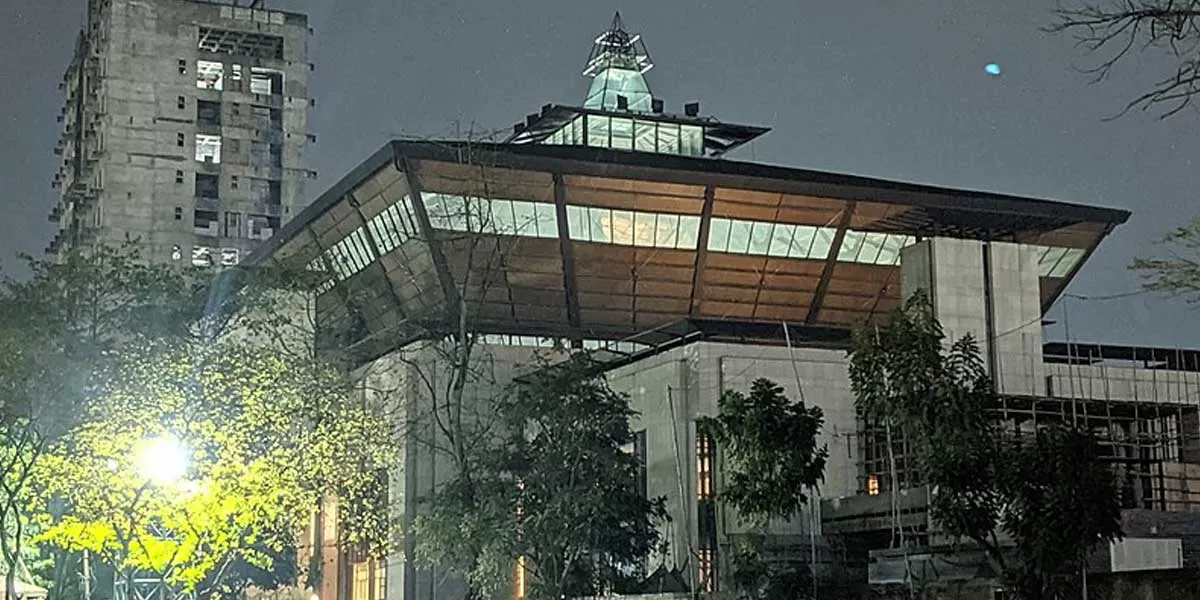Digitisation is no longer an option, it is the need of the hour for cement companies. More than the fear of losing out to competition, it is factors such as efficiency, returns and sustainability that are fueling IT initiatives in the industry. ICR takes a closer look at the IT approach that manufacturers need to take to remain ahead of the curve.
Be it rise in population or increase in development, all roads lead to an unprecedented increase in infrastructure projects worldwide. This has a direct impact on a country’s cement production. While manufacturing the next most sought-after commodity after water, cement makers are putting in optimum efforts to meet the increasing demand. The cement industry has witnessed numerous changes since the industrial revolution, and the most important one of them - technology - is here to stay. In modern times, with increasing competition, it is imperative for cement manufacturing companies to keep evolving and matching the speed at which the industry and its technology is growing. It is time for cement makers to go digital in their approach.
Digital transformation for cement manufacturers
The process of cement manufacturing starts from locating and obtaining its raw materials to making it reach the end consumer. The whole process is labour intensive and can be made more effective and streamlined by the use of technology. Digitisation has a lot to offer to a cement organisation. Here’s how:
Control over quality and process: What sounds as a simple step by step process of getting raw material, crushing it, processing it and grinding it to form cement involves a lot more detail and parameters. It is essential to measure the quality of raw material, which is fundamental for a good quality product, monitoring equipment health while chemical processes are on-going and a lot of other factors are involved in the cement making process. With the use of smart systems and technology, operators at each stage can get quick data of the process and make real-time decisions, which shall optimise the production and lead to quality results.
Equipment monitoring and health predictions: Any equipment or machinery at a cement plant undergoes wear and tear with large loads of material, continuous running and due to environmental conditions. With systems that can predict the health of these equipment and machinery, monitoring their health and downtime becomes more effective. It also helps avoid any unplanned down-time, which results in loss of time and money for the business. It also prevents any accidents with the help of equipment being monitored round the clock.
According to Rizwan Sabjan, Head – Regional Sales Enablement, FLSmidth, “With equipment in continuous use, damage can happen at any time. While visual inspections are important to provide broad, contextualised operational insights, relying only on intermittent site visits puts customers at the risk of missing the early warning signs that could enable them to drastically reduce both downtime and expenses. Online condition monitoring is a continuous service that enables customers to detect potential failures well in advance, giving them plenty of time to take preventative action and avoid actual failure.”
“By contrast, sensors on customer equipment are able to capture data that may be otherwise ‘invisible. Our online condition monitoring services connect this data to the cloud where it is continuously monitored and trended. If something is wrong, an alarm notifies our team of experts who are able to analyse the data remotely and develop a recommended action plan to rectify the fault well ahead of it escalating. It’s a low-stress, low-cost, low-risk approach to maintenance that offers high returns,” he adds.
Automation and IoT: Functioning as the brain and nervous system of the cement plant is automation. From collecting data to automating processes, the sole motive to implement this technology is to achieve effective load management and efficiency in all verticals of the cement manufacturing process. Internet of Things (IoT) is the buzz word in the world of technology and adapting to that has been known to show results for better management and predictive techniques for the business.
Connected logistics: Transportation of material from one floor to another for the next step in the process is a key component of the cement making process. It involves movement of conveyor belts, special carriers and trucks for taking the end product to its distribution sources. These operational activities can be maintained and optimised by using technological solutions that measure the vitals of the vehicles carrying load. There also are multiple software that help plan the movement of the organisation’s fleet. It contributes towards saving time and cost for the business with effective deliveries and on schedule arrivals.
Cyber security: Cement plants are as likely to be hacked or subjected to system viruses. Technology and firewalls prevent such incidents from happening.
Embracing digitisation for a sustainable future
The way forward for the cement industry is to embrace automation and technology as part of its core for planning combined with goals of achieving sustainability with their efforts. Optimising isn’t just about increasing productivity, it is also about using digital tools and integrating them in cement making processes to be able to make continuous, real-time, automatic adjustments to ensure energy consumption is reduced, giving a more energy efficient operation result.
Stating their vision for cement organisations in 2030, a report published by McKinsey and Company says, pursuing digitisation and sustainability levers are key to significantly boosting productivity and efficiency of a typical cement plant in the future. The result is a margin gain of $4 to $9 per tonne of cement, which would shift a traditional plant to the top quartile of the cost curve for plants with similar technologies. The report also throws light on the CCUS technology, stating that in terms of scalability, it is the most advanced option. Using this technology, cement players capture emitted CO2 and can either pursue carbon-cured concrete (one of the few already available utilisation options that locks in CO2 in the end product) or store carbon in former oil and gas fields.
“Talking about the commitment, by 2030 the cement industry contributes to possibly around 0.3 per cent annually, reducing the carbon emissions. So, process control becomes very critical to set your old machines to be very efficient, also making the plant connected which is a lot of technologies kept connected together because then you pull in individual resources and then get on to them at the corporate or an enterprise level which helps you look at everything like a dashboard or one consolidated level and that helps you to mind data through quality, production, process parameters and allowing operator to understand the energy consumption,” says Arvind Kakru, Director Sales, Rockwell Automation.
Digitisation also helps achieve a data driven approach for the use of alternative sources of raw materials and energy. It helps make the operating personnel be proactive in their reaction towards the changing conditions of the kilns that can be monitored with the help of technology.
Paving a path for artificial intelligence
Data is the new gold. However, having data is one thing and analysing it for the betterment of business is another. Data analytics is paving the way for artificial intelligence (AI), a new technology that is finding its way into the cement industry. AI by collecting and archiving data from the present and the past has the capability to come up with patterns, anomalies and solutions that may not have been possible to recognise otherwise. Using artificial intelligence in a cement plant will allow operators to take corrective actions before an actual problem occurs. Based on the first results of this technology, cement producers can define new, improved optimisation strategies and new approaches to maintenance concepts, such as predictive and prescriptive maintenance.
Traditional Advanced Process Control (APC) worked on an approach of taking actual measurements at defined set points in various defined processes. However, the use of AI is changing the approach of APC. In something as dynamic as a kiln, unknown variables like alternative fuel types, make the traditional Model Predictive Controllers (MPC) drift over time. The result is that most of these APC systems are out of service or require intensive fine tuning. This is where AI makes a big difference because it can also consider the history of the variables and recognise patterns in these trends.
The key advantage it brings to the process is that AI modules compare actual trends with the trends of the past in a kiln and predict what will happen in the future. In case of a failure, they issue a warning to the operator fairly in advance to avoid the situation and cause unplanned downtime. It even suggests corrective actions and best practices.
Raj Pradhan, Global Delivery Head – Building and Construction Materials, BirlaSoft says, “Digitisation brings complete near real time visibility of end to end processes which helps taking timely decisions to avoid any down time and allows best possible utilisation of resources”.
“In the current competitive market where increase in price is not helping much, the only option left to improvise the margins is through market share and optimisation of cost which can be achieved through automation,” he adds.
It is the era of Industry 4.0, manufacturers across the globe are adapting to technology, automation and data exchange in manufacturing technologies. The future for cement industry is also digitisation to achieve effective process flow, optimum productivity and energy efficiency along with flawless logistics and distribution systems.
-Kanika Mathur


















